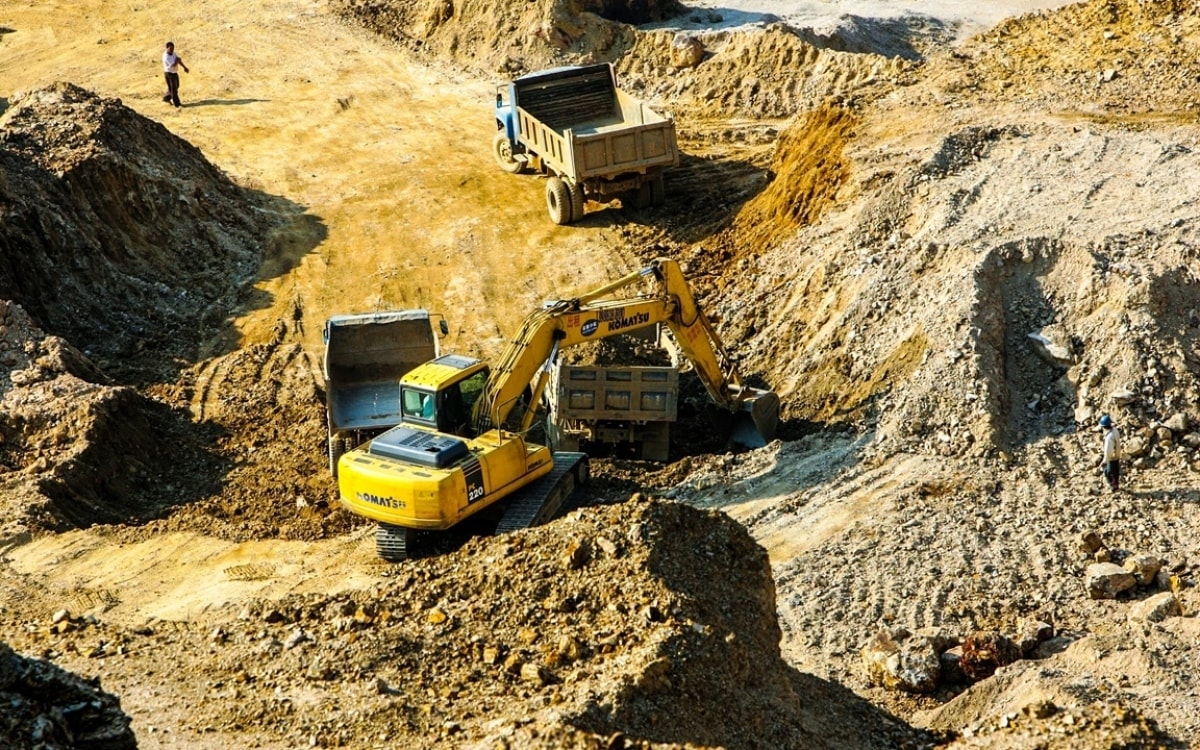Rare earths play an extremely important role in the modern economy and national security of many countries, especially in the context of energy transition and technological competition. With such an important role, it is not difficult to understand why rare earths are becoming a 'strategic card' in the competition for influence between major countries.

Russia - US join hands to cooperate
On March 30, 2025, Russian Presidential Special Envoy for Investment and International Economic Cooperation Kirill Dmitriev said that Russia and the United States have begun negotiations on cooperation projects related to rare earths and a number of other projects in Russia. This is a move that has received special attention from the international community, part of the warming trend in bilateral relations.
Immediately after taking office, President Trump made a number of strategic adjustments, especially promoting dialogue with Russia. Mr. Trump had two phone calls with his Russian counterpart Putin. Diplomatic delegations from the two countries held many direct meetings in Saudi Arabia (February 18, 2025 and March 24, 2025).
With a pragmatic policy, especially the vision of an economist, President Trump will not miss the opportunity to cooperate with Russia when Russia owns huge reserves of rare earths. On the contrary, Russia can take advantage of modern US technology in mining and processing rare earths. According to the Russian Ministry of Natural Resources, Russia's total reserves of all rare metals amount to 658 million tons, of which 28.5 million tons are rare earth metals. However, Russia's production share in the world market does not exceed 1% and the processing of rare earth metals is almost non-existent in Russia.
In February 2025, Russian President Putin approved the national project “New Materials and Chemistry”, which aims to establish a complete cycle of the rare metals and rare earths industry, ensuring their extraction and processing until the production of high-tech goods of great economic value. The move shows Moscow’s great ambition, creating an urgent need for cooperation with the United States in this important field.
Meanwhile, in the US, about 45,000 tons of rare earth metals are mined each year. About 1,500 tons are produced as oxides, the rest is processed by China and then purchased by Americans from that country.
In addition, Russia-US cooperation in the field of rare earths also creates momentum to promote the development of many other industries and fields of both countries. Rare earths play an extremely important role in the defense industry, especially in the production of weapons, radar systems, fighter aircraft and modern military equipment. If the US and Russia cooperate, the two countries can strengthen their self-sufficiency in this field, protecting important strategic supply chains.
Rare earths also play an important role in the production of high-tech devices such as mobile phones, computers, permanent magnets used in electric vehicles' electric motors, and renewable energy devices, such as wind turbines and solar panels.
The United States and Russia both possess advanced science and technology. Collaboration in research and development (R&D) in the field of rare earths can help improve methods of rare earth mining, processing, and recycling, thereby increasing efficiency and minimizing negative impacts on the environment.
China maintains rare earth monopoly
Given the particularly important role of rare earths, it is difficult for the US and Russia to accept China's monopoly in this field. Currently, China's rare earth industry plays an important role in the global economy and is also attracting attention from many other countries, especially in the context of increasing demand for high-tech products.
In terms of resource reserves, China is the country with the largest rare earth reserves in the world, accounting for about 37% of the total global reserves. These resources are mainly concentrated in Xinjiang and Inner Mongolia. In terms of production capacity, China not only possesses abundant resources, but also has the ability to produce and process rare earths on a large scale. This helps China dominate the global market.
China is estimated to produce about 60-70% of the world's total rare earths. In terms of supply chain control, China not only mines rare earths, but also has the ability to process and manufacture important rare earth components such as permanent magnets, batteries, and electronic products.
China controls much of the supply chain, from mining to manufacturing of high-tech products, especially in the electric car, electronics, and renewable energy industries. In terms of development strategy, China has implemented many strategies to protect and expand its dominance in the rare earth industry. One of the important strategies has been to restrict the export of rare earths in recent years, in order to retain this precious resource and control global value. This helps to enhance China's competitiveness in the rare earth industry and reduce its dependence on resources from other countries.
Even the United States is dependent on China for rare earths, especially for refining and manufacturing intermediate products. According to data from the US Geological Survey (USGS), 80% of the rare earths imported by the United States in recent years have come from China.
In the escalating trade war between the US and China, there is one notable exception: 31 critical minerals, including rare earth elements, have been strategically exempted from tariffs.
Obviously, the US is trying to reduce its dependence on China for rare earths, most recently through a move to cooperate with Russia, but currently it still needs China in many important steps, especially in deep processing and supplying heavy rare earths (such as dysprosium, terbium, etc.). This will be a "weak point" that significantly limits the US strategy in the context of the increasingly escalating US-China competition.
HUNG ANH